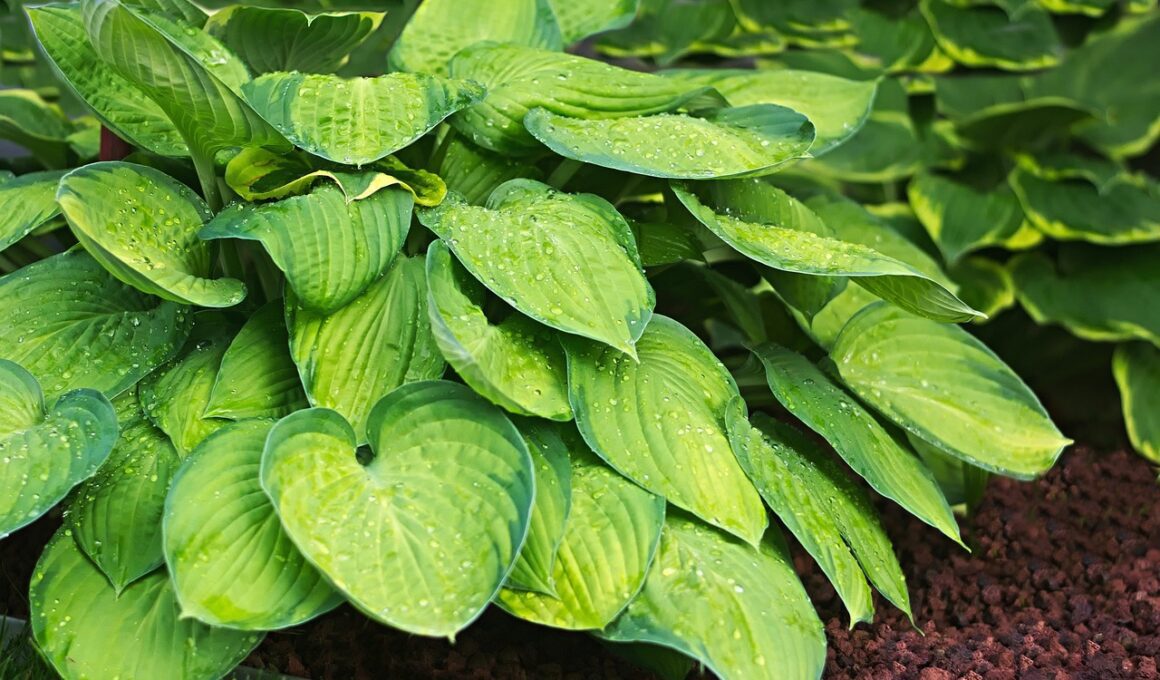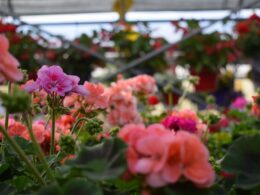Do you want to have a garden that lasts throughout the winter? Are you worried that your garden will be barren and uninviting during the colder months? Well, fear not!
There are plenty of outdoor plants that can withstand the harsh winter weather and bring life and color to your garden all year round. Evergreens, such as pine, spruce, and fir trees, are the ultimate winter plants. These trees retain their foliage all year round and provide a beautiful green backdrop to your garden even in the depths of winter.
But evergreens aren’t the only option. Perennials, shrubs, winter vegetables, and winter annuals can also thrive in the colder months and add a touch of beauty and warmth to your outdoor space. Keep reading to find out which outdoor plants will last through the winter and make your garden a cozy and inviting space no matter the season.
Evergreens
Evergreens are a great option for adding year-round greenery to your landscape. They’re known for their winter foliage, which can provide a pop of color in an otherwise barren and dreary winter landscape. Additionally, evergreens are available in a variety of cold tolerant varieties, making them a great option for regions with harsh winter climates.
One great option for a cold tolerant evergreen is the Japanese Yew. This plant can withstand temperatures as low as -20 degrees Fahrenheit and is known for its lush green foliage. Another option is the White Spruce, which can grow up to 60 feet tall and has a beautiful blue-green hue. Finally, the Norway Spruce is a classic evergreen with dense foliage and a conical shape, making it a great choice for borders or hedges.
Overall, evergreens are an excellent choice for those looking for outdoor plants that can last through the winter. With their cold tolerant varieties and year-round greenery, they’re a great way to add some color and life to your winter landscape. So, if you’re looking for a low maintenance and beautiful addition to your yard, be sure to consider an evergreen.
Perennials
If you’re looking for plants that will come back year after year, perennials are a great option.
There are many types of perennials to choose from, including flowers, herbs, and even some vegetables.
The benefits of perennials include not having to replant every year, saving money in the long run, and providing a consistent look to your garden.
To care for perennials, it’s important to ensure they have adequate water and sunlight, and to prune them as needed to encourage healthy growth.
Types of Perennials
Perennials offer a diverse range of options for adding color and texture to your garden year after year. There are many types of perennials that can survive the winter months and provide a beautiful display of foliage and flowers.
When choosing perennials, it’s important to consider their needs in terms of soil, pruning techniques, watering strategies, and sunlight requirements. Some perennials, like hostas and ferns, prefer moist soil and shady areas. Others, like daylilies and coneflowers, thrive in full sun and well-draining soil.
It’s important to research the specific needs of each type of perennial to ensure they will survive the winter and thrive in your garden. Proper pruning techniques can also help perennials survive winter. Cutting back dead foliage and stems can prevent disease and encourage healthy growth in the spring.
With the right care and attention, perennials can provide a beautiful and long-lasting addition to your outdoor space.
Benefits of Perennials
You’ll be amazed at the benefits perennials bring to your garden, adding year-round color and texture that require minimal maintenance. Here are 4 reasons why you should consider incorporating perennials into your landscaping design and garden planning:
-
Perennials are cost-effective. They may cost more upfront, but they are a long-term investment. Unlike annuals that need to be replanted every year, perennials come back year after year, reducing the need to constantly buy new plants.
-
Perennials are low maintenance. Once they are established, they require minimal care. They don’t need to be replanted every year, and they are generally drought-tolerant.
-
Perennials are great for attracting pollinators. They are a great way to attract bees, butterflies, and other pollinators to your garden. They provide a food source and habitat for these important creatures.
-
Perennials provide year-round interest. They provide color and texture to your garden throughout the year. Even in the winter, some perennials, like ornamental grasses, can provide interest and structure to your garden.
Caring for Perennials
Now that you’ve incorporated perennials into your garden, it’s important to know how to care for them to ensure their longevity and continued beauty.
One of the key steps in caring for perennials is perennial pruning. This involves cutting back dead foliage and stems to promote new growth and prevent disease. It’s best to prune perennials in the late fall or early spring, depending on the plant’s specific needs. Be sure to use clean, sharp tools to avoid damaging the plant.
Another important aspect of caring for perennials is overwintering techniques. Depending on your region, you may need to take certain steps to protect your plants from harsh winter conditions. This can include mulching around the base of the plants to insulate them, or covering them with a protective cloth.
It’s also important to avoid overwatering during the winter months, as this can lead to root rot. With proper care and attention, your perennials can thrive for years to come, bringing beauty and joy to your outdoor space.
Are Begonias Suitable to Be Planted Outdoors in the Winter?
Begonias lifespan length can be impacted by planting them outdoors in the winter. While some begonia varieties are hardy enough to withstand colder temperatures, most are not and may not survive the winter. To ensure their well-being, it’s advisable to bring begonias indoors or provide them with proper protection during the cold season.
Shrubs
You can count on shrubs to add a touch of greenery to your yard even when the temperatures drop. If you’re looking for outdoor plants that can last through the winter, shrubs are a great option. They’re hardy, long-lasting, and can withstand the cold weather.
Here are some tips to help you care for your shrubs during the winter months:
- Mulch around the base of your shrubs to help protect the roots from freezing temperatures.
- Water your shrubs regularly, especially during dry spells. This will help keep them hydrated and healthy.
- Prune your shrubs in the fall to help promote new growth in the spring. Use the best pruning tools, such as sharp shears or a pruning saw, to make clean cuts.
- Keep an eye out for common shrub diseases, such as powdery mildew or black spot. Use natural remedies, like neem oil or baking soda, to help prevent and treat these diseases.
- Choose shrubs that are well-suited to your climate and soil type. This will help ensure that they can thrive in your yard, even during the winter months.
With a little bit of care and attention, your shrubs can provide year-round beauty and greenery for your yard. So don’t be afraid to add some shrubs to your outdoor plant collection this winter!
Winter Vegetables
Winter veggies are a great way to keep your garden thriving during the colder months, providing fresh and healthy produce right at your fingertips. But what if you don’t have an outdoor space to grow them in? Fear not, there are plenty of indoor options for growing winter vegetables.
One of the easiest ways to grow veggies indoors is to use containers. You can grow a variety of vegetables in pots, such as carrots, lettuce, and radishes. Just make sure to choose a container that’s big enough for the plant’s root system and place it in a sunny spot in your home. You can also use grow lights to supplement natural light if needed.
Another technique for growing winter vegetables indoors is hydroponics. This method involves growing plants in a soil-free environment, using water and nutrients instead. Hydroponics can be a bit more complex than growing in containers, but it allows for more control over the growing environment. You can even grow larger vegetables such as tomatoes and peppers using this method.
Don’t let the colder months put a damper on your gardening ambitions. With indoor options and growing techniques like containers and hydroponics, you can keep your produce fresh and healthy all winter long. So start planting and enjoy the fruits (and veggies) of your labor!
Winter Annuals
Get ready to brighten up your indoor space with beautiful and colorful winter annuals that’ll add a pop of color and life to your home during the colder months. With the right selection of winter annuals, you can have an indoor garden that blooms throughout the season.
These plants are a great way to bring a touch of nature indoors while also adding some much-needed brightness to your home. When selecting winter annuals, consider flower color as an important factor. Some options for colorful blooms include pansies, snapdragons, and cyclamen. These plants come in a variety of colors, including vibrant purples, pinks, and yellows.
By selecting a mix of colors, you can create a stunning display that’ll keep your spirits high all winter long. Planting tips for winter annuals include ensuring they’re placed in a spot that gets plenty of sunlight and that you water them regularly. Most winter annuals prefer cooler temperatures, so avoid placing them near any heat sources.
With proper care and attention, your winter annuals will thrive and bring a touch of life to your home during the colder months.
Frequently Asked Questions
How do I protect my outdoor plants from harsh winter weather?
Protecting your outdoor plants from harsh winter weather is crucial to ensure their survival. Winter plant covers and frost protection techniques are essential tools to keep your plants safe during the colder months.
One effective way to protect your plants is by using frost blankets or covers. These covers are made of breathable fabric that allows air and moisture to circulate while keeping the plants warm.
Another technique is to mulch around the base of your plants with a layer of straw or leaves. This will help insulate the roots and protect them from freezing temperatures.
By taking these simple steps, you can ensure that your outdoor plants survive the winter and thrive come springtime.
Can I still plant outdoor plants in the winter?
Looking to plant some outdoor plants in the winter? The key to success is selecting plants that thrive in colder temperatures. Some great options include winter cabbage, kale, and garlic, which can all be planted in the winter.
When planting, be sure to choose a spot that receives plenty of sunlight and make sure the soil is well-drained. Additionally, you’ll want to protect your plants from the harsh winter weather by covering them with blankets or tarps on particularly cold nights.
With these winter planting tips and the best plants for winter gardening, you can enjoy a beautiful and bountiful garden even in the coldest months of the year.
What is the best way to care for outdoor plants during the winter months?
As the winter months approach, it’s important to take extra precautions to ensure the survival of your outdoor plants.
One of the best ways to protect your plants is by using mulching techniques. This involves adding a layer of organic material, such as leaves or straw, around the base of your plants to insulate their roots from the cold.
Additionally, choosing drought-resistant varieties can help ensure that your plants can withstand the harsh conditions of winter.
By taking these steps to care for your plants, you can rest assured that they will thrive and survive through the colder months.
Are there any outdoor plants that are not suitable for winter climates?
When it comes to winter plant selection, it’s important to choose plants that are winter hardy and can withstand the harsh conditions. However, not all outdoor plants are suitable for winter climates.
Some plants, such as tropical plants, are not able to survive in cold temperatures. When selecting outdoor plants for winter, look for plants that are native to your area and have a track record of surviving winters.
Winter hardy plants like evergreens, holly, and winterberry are great options for adding color and life to your outdoor space during the winter months. By choosing the right plants, you can enjoy a beautiful landscape all year round.
Can I still enjoy colorful blooms from outdoor plants during the winter?
Winter gardening can be a challenge, but you don’t have to give up on colorful blooms altogether. To enjoy flowers during the colder months, consider indoor plant options such as amaryllis, poinsettias, and cyclamen. These plants can be grown in containers and placed in a sunny window, adding a pop of color to your home.
If you’re looking to venture outdoors, there are hardy winter plants such as winter jasmine, hellebores, and witch hazel that can withstand colder temperatures and still produce beautiful blooms. With a little research and careful planning, you can still enjoy the beauty of flowers even in the midst of winter.
Conclusion
So there you have it, a list of outdoor plants that can survive through the winter months. Evergreens are a great choice as they keep their leaves all year round and provide a beautiful backdrop to any garden.
Perennials are also a good option as they come back year after year, and there are many varieties that can withstand the cold temperatures. Shrubs are another great option, with many varieties that can survive even the harshest winter conditions.
If you’re looking to grow some winter crops, there are plenty of vegetables that can thrive in the cold such as kale, spinach, and Brussels sprouts. Finally, if you want to add some color to your garden during the winter months, consider planting winter annuals such as pansies or winter jasmine.
With a little bit of planning and some careful consideration, you can create a beautiful outdoor space that will last through the winter months. So don’t be afraid to experiment with different plants and see what works best for your garden. With the right combination of plants, you can enjoy a vibrant and colorful outdoor space all year round.









